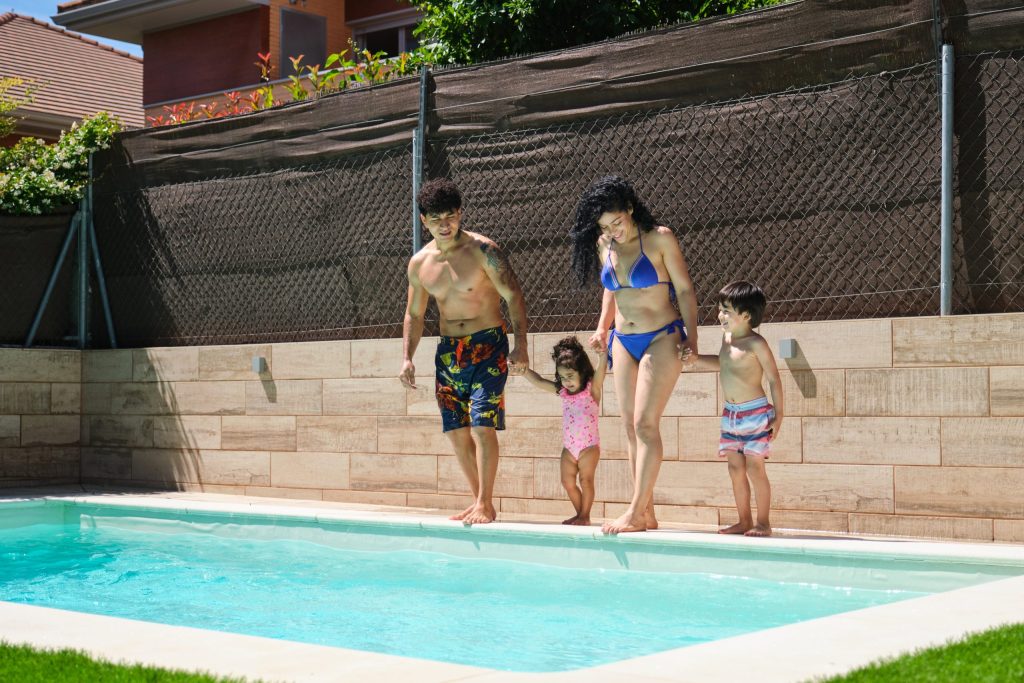Pool Safety Fence Regulations: What Every Pool Owner Should Know
Owning a pool is a great way to enjoy the outdoors and have fun with family and friends, but it also comes with a serious responsibility to ensure everyone’s safety. One of the most critical safety measures for any pool owner is installing a compliant pool safety fence. Understanding the regulations surrounding pool safety fences is essential to prevent accidents, reduce liability, and stay on the right side of the law.
Understanding the Importance of Pool Safety Fence Regulations
Why Pool Fences Are Essential for Safety
Pool safety fences play a crucial role in preventing accidents and drowning incidents, especially for families with young children or pets. According to the U.S. Consumer Product Safety Commission (CPSC), pool fencing can significantly reduce the risk of drowning by serving as a physical barrier that restricts unauthorized access. Ensuring that a pool is properly enclosed also helps keep out wildlife and prevents unwanted debris from entering the water, contributing to overall safety and cleanliness.
Legal Requirements for Pool Owners
Most regions in the United States have stringent legal requirements regarding pool safety fences to protect public safety. Compliance with these regulations is not only a legal obligation but also a moral one, as it helps prevent tragedies. Failure to adhere to pool safety fence regulations can result in hefty fines, legal actions, and increased liability in the event of an accident. Understanding and implementing these rules is essential for every pool owner to ensure the safety of their property.
Key Pool Safety Fence Regulations in the United States
Federal vs. State Pool Fence Requirements
In the U.S., pool safety regulations can vary significantly depending on federal, state, and local guidelines. While the federal government provides a set of minimum standards through the CPSC’s guidelines, individual states often have additional rules that may be more specific or stringent. Pool owners must familiarize themselves with both their state’s and local municipality’s requirements to ensure full compliance.
Common Standards for Pool Safety Fences
Standard regulations generally require that pool fences meet specific criteria to be considered safe. Some of the most common standards include:
- Minimum Height: Pool fences are typically required to be at least 4 feet tall.
- Climb-Resistant Design: The fence should not have footholds or handholds that would allow a child to climb over it.
- Self-Closing and Self-Latching Gates: Gates should automatically close and latch to prevent accidental access.
Local Regulations and How to Check Them
Local regulations for pool safety fences can be more specific than state guidelines, taking into account community needs and environmental factors. It is advisable for pool owners to check with their city or county building department or visit their local government website to understand the precise requirements in their area.
Features of a Compliant Pool Safety Fence
Height and Structure Requirements
The height of a pool fence is a critical factor in ensuring safety. Most jurisdictions require a minimum fence height of 48 inches (4 feet), although some areas may require it to be taller. The fence should be designed to prevent children from squeezing through or climbing over, with vertical bars spaced close enough to block small bodies from passing through.
Gate and Lock Mechanisms
A compliant pool safety fence must include self-closing and self-latching gates. The latch should be placed high enough to be out of a child’s reach, typically at least 54 inches from the ground. This feature ensures that the gate remains closed and locked when not in use, preventing unintended access to the pool area.
Material Considerations for Durability and Safety
The choice of material for a pool safety fence can affect its durability and maintenance needs. Common materials include aluminum, vinyl, mesh, and wrought iron. Pool owners should choose a material that can withstand weather conditions and resist corrosion, especially in regions with high humidity or coastal exposure.
Tips for Choosing the Right Pool Safety Fence
Factors to Consider When Selecting a Fence
When selecting a pool safety fence, factors like durability, cost, aesthetics, and compliance with local regulations should be taken into account. It is important to balance safety features with design preferences to ensure the fence complements the property while providing adequate protection.
Cost vs. Quality: Finding the Best Value
Investing in a high-quality fence can save money in the long run by reducing maintenance costs and extending the life of the fence. While budget-friendly options are available, they may not offer the same level of durability or safety features as higher-end models.
Professional Installation vs. DIY
While some pool owners may opt to install the fence themselves to save on costs, professional installation is often recommended. Professionals can ensure that the fence is installed correctly, adheres to all local codes, and functions as intended for maximum safety.
Consequences of Non-Compliance with Pool Safety Fence Regulations
Legal Penalties for Non-Compliance
Failure to comply with pool safety fence regulations can result in substantial fines, legal penalties, and even civil lawsuits in the event of an accident. Local authorities have the right to issue citations and demand immediate corrective action if a pool fence is found to be non-compliant.
Safety Risks and Liability Concerns
Non-compliance not only increases legal risks but also heightens the chances of accidents and injuries, leading to significant liability concerns. A non-compliant pool fence can leave the property owner legally responsible for any incidents that occur, which could result in costly settlements or damages.
How to Maintain Your Pool Safety Fence
Regular Inspection and Maintenance Tips
To keep a pool safety fence effective, regular inspections are crucial. Check for any signs of damage, such as rust, loose fittings, or gaps that could compromise the barrier’s integrity. Cleaning the fence regularly to remove debris and checking the gate mechanism will also help maintain its functionality.
Repair and Replacement Guidelines
If any part of the pool fence shows signs of wear or damage, it should be repaired or replaced immediately to maintain safety standards. Common issues include broken panels, faulty latches, or rust on metal fences. It’s advisable to consult with a professional for major repairs to ensure compliance with regulations.
Pool Safety Fence Regulations for Different Pool Types
In-Ground Pools
In-ground pools often have stricter safety fence requirements due to their permanent nature and ease of access. The fence must completely surround the pool, leaving no direct entry points from the house or other structures.
Above-Ground Pools
Above-ground pools may have slightly more lenient regulations, depending on their height. However, a removable ladder or steps must be used, and these should be secured or locked when the pool is not in use to prevent accidental entry.
Portable and Inflatable Pools
Portable and inflatable pools are sometimes overlooked in terms of safety requirements, but they can pose similar risks as permanent pools. Many local regulations now require these pools to be enclosed by a barrier if they exceed a certain depth, typically 18-24 inches.

Navigate Pool Safety Fence Regulations With Pool Operation Management
Pool safety is more than just a legal requirement; it’s a critical measure to protect your loved ones. Pool Operation Management offers expert consulting services to help you navigate the complexities of pool safety fence regulations and ensure your pool area meets all safety standards. For personalized advice and to schedule a consultation, reach out to our team today.






